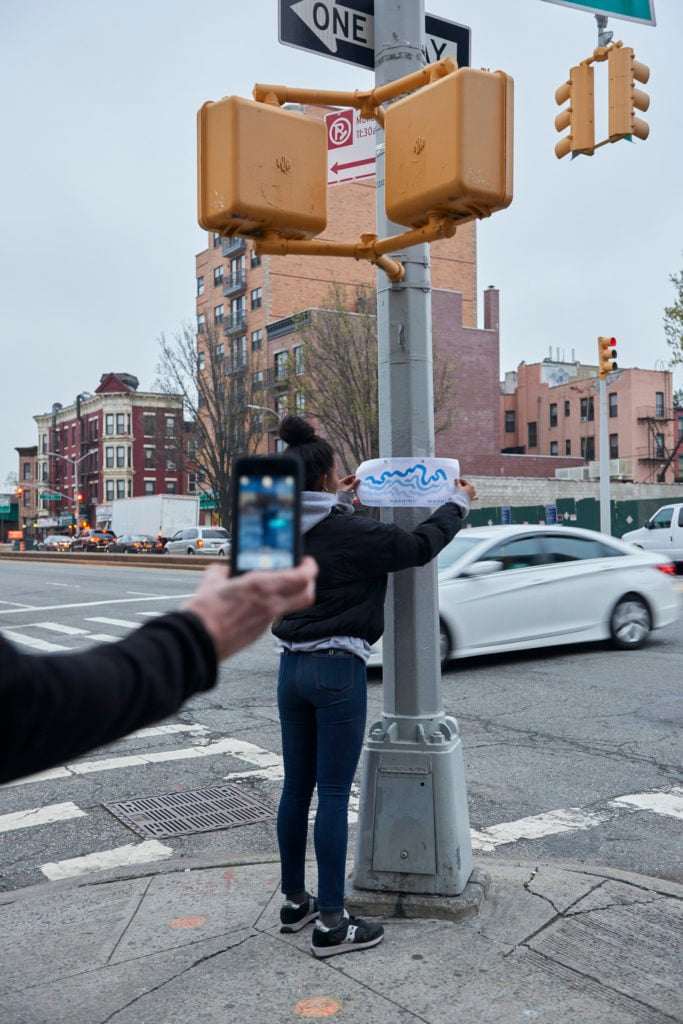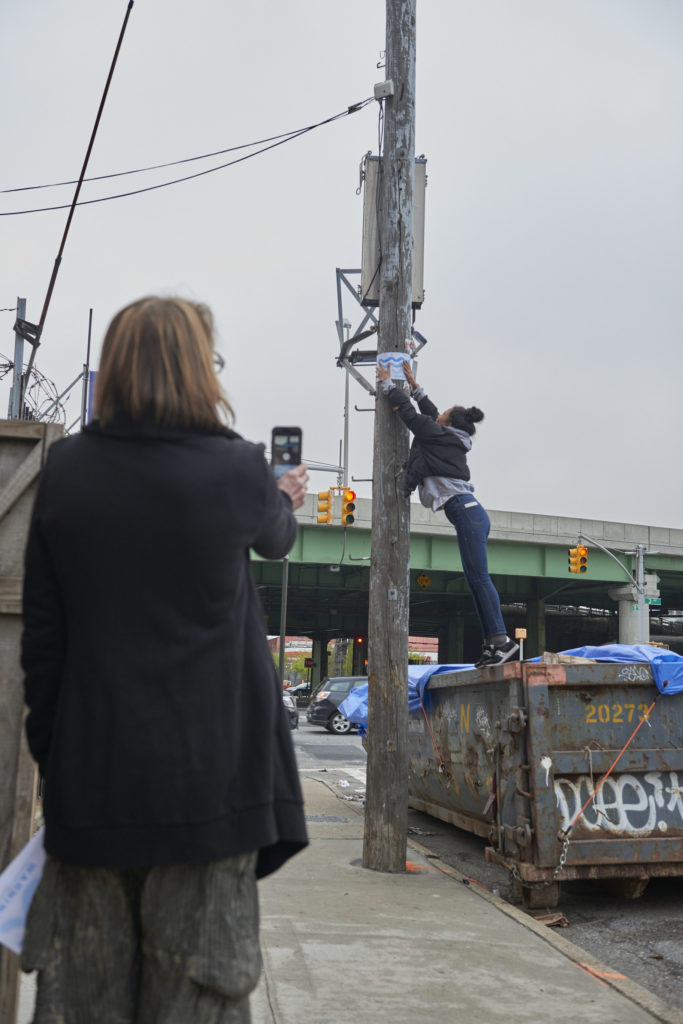People
On Earth Day, One Artist Launches a Secret Project to Show What New York Will Look Like Underwater
After seeing the polar ice caps up close on a NASA flight, Justin Guariglia is bringing climate change research to the streets.

After seeing the polar ice caps up close on a NASA flight, Justin Guariglia is bringing climate change research to the streets.

Julia Halperin

If you walk around New York City this weekend, you might notice unfamiliar posters pasted to telephone poles and buildings a few feet above your head. “Warning! Imminent Flood Zone,” they read. The posters show just how much the sea level will rise in 60 years’ time. They are part of a guerrilla project masterminded by the artist Justin Guariglia, who has joined NASA scientists on polar survey flights for the past two years.
As thousands of scientists and supporters gather in Washington, DC, and other cities to protest President Donald Trump’s environmental policies on Earth Day, a crew of around 20 volunteers are putting up the posters in New York City. (Guariglia declined to specify which neighborhoods the volunteers were going to hit, since “technically what they are doing is illegal.”)
The height of the posters is determined by the estimated sea level rise in the 2080s, based on the latest research published by NASA and New York City’s panel on climate change. “This is going to happen within the lifespan of a child today,” Guariglia says.

Justin Guariglia. (Image courtesy of the artist.)
The aim of the project is to make climate change—a subject that often seems theoretical and remote—visceral. Scientists believe the sea level will rise by around seven feet within the next 60 to 70 years. That means that in downtown New York, only the hind quarters of the Wall Street Bull will remain above water. (Those who are not fans of “Fearless Girl” might be pleased to learn that she will be entirely submerged.)
Guariglia developed the idea for the project after he accompanied scientists on NASA’s Operation Ice Bridge mission in 2015. As the scientists flew over Greenland, tracking the shrinking polar ice sheets with sensors and radars, Guariglia collected images and data of his own. (A body of work based on the expedition is on view at TwoThirtyOne Projects in Chelsea until April 30.)
“We have a serious disconnect from important existential issues like global warming and melting glaciers,” Guariglia says. “Glaciers live a world away, and in a temporal and spatial scale that evolution has not prepared us to understand...Global warming is happening, however it needs to be emotionally felt before people will want to take action.”
The posters are not the only way Guariglia hopes to communicate the danger of climate change. Earlier this week, he launched an app called After Ice, which uses the same data to show users how sea level rise will affect them. When you enter the app and turn the camera toward you, a cartoon waterline shows just how far underwater you will be in the 2080s, and even further into the future, when all the polar ice melts. “One person took a selfie wearing a scuba mask at their desk, because they’ll be underwater,” Guariglia says. (Because the app is based largely on data generated by New York’s panel on climate change, it is most accurate within a 100 mile radius of the city.)

After the project’s debut in New York, Guariglia plans to bring it to other coastal cities that have been—and will be—dramatically affected by climate change. Next month, he will launch the project in Venice during the Venice Biennale. But his dream is to have at least one poster pop up at Trump’s Mar-a-Logo resort. “I’m looking for volunteers,” he says.